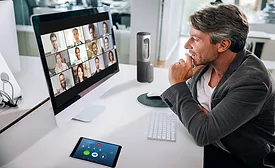Home » pandemic
Articles Tagged with ''pandemic''
COVID-19 Heroes
Boston Scientific’s Global Security and Resiliency Department takes the lead in COVID-19 response
The global medical device manufacturer has maintained operational continuity throughout the pandemic, using clear processes and procedures mixed with a healthy dose of care.
December 6, 2021
COVID-19 Heroes
Cognizant’s Global Business Resilience team leads crisis management
Global Business Resilience at Cognizant enabled decision-making and business continuity during the COVID-19 pandemic.
December 6, 2021
COVID-19 Heroes
Dell Technologies takes a holistic, risk-based approach to build resilience
At Dell Technologies, collaboration across the security function has been a pillar to crisis response during the COVID-19 pandemic.
December 6, 2021
Making videoconferences more secure
The surge in their use has also led to a surge in their abuse. But there are steps you can take to better secure your videoconferences.
March 17, 2021
Sign-up to receive top management & result-driven techniques in the industry.
Join over 20,000+ industry leaders who receive our premium content.
SIGN UP TODAY!Copyright ©2025. All Rights Reserved BNP Media.
Design, CMS, Hosting & Web Development :: ePublishing











